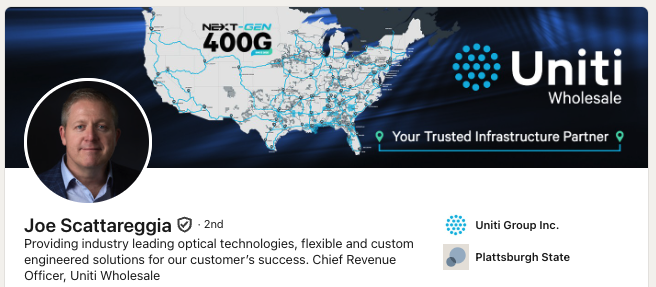Rebranding is not simply about changing a logo or updating a color palette. For B2B companies, it is a strategic move that ensures the way you present yourself to the world reflects who you are now, not who you were years ago. Many businesses evolve over time. Services expand, markets shift, competitors emerge, and client expectations grow more sophisticated. If your brand has not kept pace with that evolution, it risks creating a disconnect between how you see yourself and how clients see you. Keep reading to find out how to rebrand your B2B company the right way.
Why Rebranding Every Few Years Matters
Brands tell a story about your company’s values, expertise, and future direction. Over time, that story can drift out of alignment with reality. Perhaps your business started with a single niche service but has since expanded into new verticals. Or maybe you have outgrown your original audience and need to appeal to decision-makers at a different level. Without a rebrand, you risk being boxed into an outdated perception that no longer serves your goals.
Updating Your Website
When prospects are researching potential partners, your website is often the first impression. An outdated website not only weakens your brand but can also impact lead generation. A rebrand offers the opportunity to bring your website in line with your updated identity. This may involve redesigning the layout with a modern look, refreshing the language to better capture your messaging, and ensuring the navigation is simple and intuitive. It is also the right time to update search engine optimization so that your content reflects the keywords and services most relevant to your growth strategy. A website that is aligned with your rebrand becomes a powerful tool for generating trust, capturing leads, and converting prospects into clients.
Aligning Social Media with Your New Identity
Social media is where your brand personality comes to life. For many B2B companies, LinkedIn and other platforms are essential for establishing thought leadership and staying connected with clients. When you rebrand, your social media presence must reflect the change. This goes beyond swapping out profile photos or updating banners. It involves making sure the language in your bios reflects your refined positioning and that your tone of voice is consistent across every channel. The way you post, the topics you cover, and the visuals you use all need to tell the same story as your website and marketing materials. If even one platform feels outdated, it can create confusion and dilute the impact of your rebrand.
 Creating Buzz Around the Rebrand
Creating Buzz Around the Rebrand
A rebrand is not something to roll out quietly. It is an opportunity to build excitement and reintroduce your company to clients, prospects, and partners. Social media can play a key role in this launch. By sharing behind-the-scenes updates, creating anticipation in the weeks leading up to the reveal, and clearly explaining the reasons for the change, you transform the rebrand into a moment that generates attention.
On launch day, you can use a video, a blog article, or a coordinated series of posts to tell the story behind the rebrand. Explaining why you made the decision and how it benefits your clients makes the change more meaningful. Employees can also participate by sharing their perspective, which adds authenticity and extends your reach. A well-planned rollout positions your rebrand as a milestone worth celebrating, rather than a cosmetic update.
Updating Business Cards and Collateral
Although many business interactions have moved online, tangible materials such as business cards and brochures remain powerful tools for B2B companies. These items often serve as a lasting reminder of who you are after a meeting or networking event. If they don’t reflect your new identity, they send mixed signals.
Rebranding is the perfect time to update all printed materials, including pitch decks and sales sheets. This ensures that every touchpoint feels consistent and professional. Even small details like typography, photography, and layout play a role in shaping how credible your company appears. Clients notice when the details are aligned, and that consistency builds trust.
Employee Alignment During a Rebrand
One of the most overlooked aspects of a rebrand is the internal rollout. Employees are the face of your company, and they need to understand and embrace the new brand. If they are confused about the changes or unsure about how to represent the new identity, the rebrand will not land with clients.
Internal communication is key. Hosting workshops, sharing the vision behind the rebrand, and providing clear brand guidelines helps employees feel included in the process. Simple steps such as updating email signatures, refreshing LinkedIn profiles, and using new branded templates ensure the identity is reinforced in every interaction. When employees are excited about the rebrand, they become natural ambassadors who carry the new story forward.
 Refreshing Sales and Marketing Materials
Refreshing Sales and Marketing Materials
Beyond the website and social media, B2B companies rely on proposals, case studies, and presentations to win business. If these assets don’t reflect your rebrand, they can undermine your efforts. Prospects notice when materials look outdated or inconsistent. As part of the rebrand process, review every piece of collateral used in the sales cycle. Update the design, refine the messaging, and make sure the materials support your new positioning. A consistent, polished look helps your team communicate with authority and gives prospects confidence in your ability to deliver.
Extending the Rebrand to Your Office
For companies with client-facing offices or those that participate in trade shows, the physical environment also matters. Office signage, event displays, and branded merchandise should align with the new identity. These details may seem secondary, but they contribute to the overall impression of your company. When the physical and digital experiences match, the brand feels unified and intentional.
How IN2communications Can Help
At IN2communications, we understand that a rebrand is not just a design project. It’s a strategic shift. We work with B2B companies to uncover their unique story, translate it into a powerful identity, and bring it to life across every channel. From websites and social campaigns to internal rollouts and launch strategies, we ensure the process is smooth and the results are meaningful.
Our goal is to help you move beyond surface changes and create a brand that truly represents your company’s evolution. By aligning your identity with your vision, we help you strengthen client relationships, differentiate from competitors, and inspire your team.
Final Thoughts
By focusing on your website, social media, sales collateral, employee alignment, and every touchpoint in between, you build a consistent brand that clients can believe in. The process requires time and investment, but the result is a stronger, more relevant presence that sets you up for long-term success. If your brand no longer feels like an accurate reflection of your company, it may be time to start the rebranding journey.



